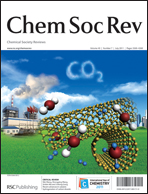Molecular simulations for energy, environmental and pharmaceutical applications of nanoporous materials: from zeolites, metal–organic frameworks to protein crystals
Abstract
Nanoporous materials have widespread applications in chemical industry, but the pathway from laboratory synthesis and testing to practical utilization of nanoporous materials is substantially challenging and requires fundamental understanding from the bottom up. With ever-growing computational resources, molecular simulations have become an indispensable tool for material characterization, screening and design. This tutorial review summarizes the recent simulation studies in


 Please wait while we load your content...
Please wait while we load your content...